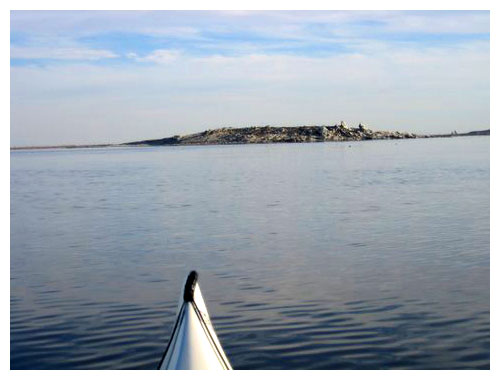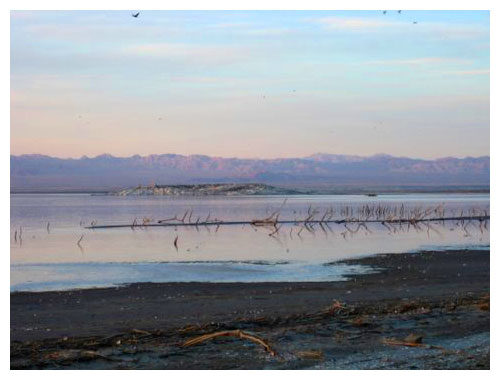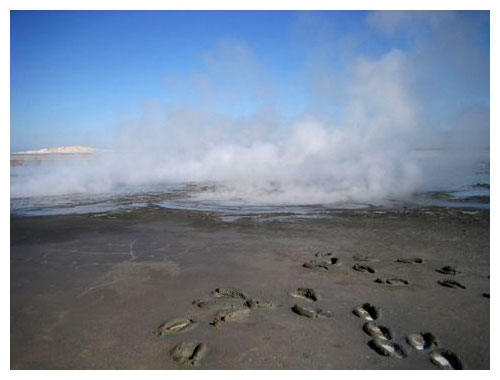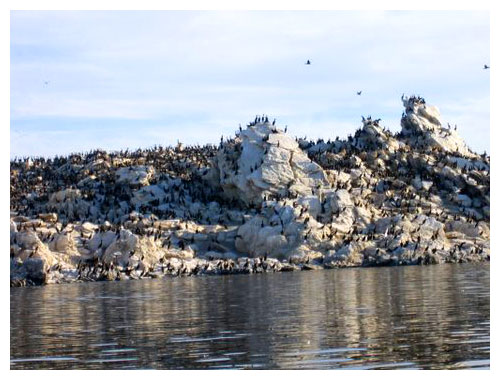
I’m currently waiting on Crystal’s secret recipe for her Double Chocolate Quick Bread that she made for our snowshoeing trip in Rocky Mountain National Park a few weeks ago. I planned to post that this week because I have amazing photos of that delicious bread. Until then, I have a contribution from our friends Dan and Adam, on feeding while kayak camping.
We have a lot of kayakers in our lives. I used to pretend to be one when I lived in Florida, but haven’t gotten back into it since being on the west coast. Aimee’s dad recently took a 5-day kayaking trip around the Salton Sea. His contribution are these beautiful photos.

Adam grew up in Florida with a brother who had free access to unlimited kayaks. His main focus is the importance of keeping your gear and food dry, emphasizing that bulkheads are not watertight:
If you’re camping on land, it’s really not much different than backpacking; actually a bit easier perhaps. Just a few basic things to keep in mind:
- Keep your food and cooking gear dry:
- Dry Bags:
- Roll-top dry bags are usually the most secure and convenient option. Many other options are out there, such as “waterproof” zippered bags, slide lock bags, etc. Just test them ahead of time and make sure they keep water out.
- Check the holiness of your dry bags ahead of time by blowing into them and rolling them closed. If the air leaks out very easily, then you might want to search for holes and patch them.
- Try to find clear dry bags. Some manufacturers make their bags out of clear plastic, which is very useful when trying to remember where you put a specific meal or utensil.
- Having your food and gear in dry bags will also keep sand out of your gear and meals.
- Some food may come in watertight packages (tuna, backpacker’s meals, etc), and it is not necessary to have it in a dry bag, but it’s still not a bad idea.
- If you’re kayaking (especially on salty water), you’ll want to be sure to keep your stove and any metal utensils dryly stored away between campsites. Saltwater corrosion can destroy your gear quickly.
- Dry Bags:
- Cater to your boat (food pun intended):
- Much like backpacking, your boat will have a definitive amount of bulkhead (hatch) space. You will need to carefully plan how much gear you can bring based upon how much room there is to store your food, water, tent, sleeping gear, Dirty Gourmet apron (TM), etc. in the bulkheads.
- UNLIKE backpacking, weight is rarely an issue in kayaks. To a certain point that is. As long as it fits in the bulkheads and the lids close securely, a heavier load can be carried more comfortably in a kayak than in a backpack.
- If there will be lots of portaging on the trip (carrying your gear over land between water bodies), pack accordingly. Try to consolidate your gear into as few bags as possible, and if you can put dry bags inside of a backpack and still fit the backpack into the bulkhead, carrying the gear will be easier.
- Bulkheads are not watertight! You may be lucky enough to be in very calm seas and/or have a very seaworthy boat, but in all cases, bulkheads should not be considered to be completely dry havens for your gear. Hence the recommendation above to use dry bags for anything you want to remain dry.
- Catching your food:
- If you’ll be fishing along the way, it goes without saying that you’ll want all appropriate gear to catch, release, clean, and prepare your fish.
- It’s important to know guidelines on what you can keep and what you should release. A fishing license of the proper type is also suggested.
- When fishing far from shore, and catching multiple fish to keep, use a stringer to keep them alive in the water until you head into shore.
- Once at shore, it is easiest to clean a fish on the bottom of your boat or a smooth, flat (large) rock.
- Flip your boat over on shore (far away from camp so as not to attract animals) and make sure it’s clean on the bottom (rinse if necessary)
- Use the hull as a cutting board, and wash fish remains off of boat when finished filleting.
- Dispose of fish remains/carcass in deep water if possible and be sure to leave as little as possible on land so as not to attract scavengers.
- Carry oil, breading, and spices to make your fish dish more enjoyable and easier to cook.

Dan is always into the most adventurous side of things, and has focused mainly on the beauty of being able to catch your own dinners while kayaking. Here are his tips on kayak camping and eating:
First, if potable water is scarce, do not put all your water in one container. If a leak does occur in your sole container, the effect upon the trip can be catastrophic. The movement of vessels on the water often causes abrasion to material and loosening of lids. I suggest multiple 1-2 liter containers. Soft water containers are easiest to fit in your vessel. They tend to add stability to your vessel when stored low and amidships.
Second, I cannot emphasize enough the utter bliss of finding your own food while on the water. This can be in the form of clams, mussels, fish, scallops, etc.
15 minutes research of hunting possibilities on the Internet and a few small items can yield thousands of calories and hours of fun while on the water. The easiest item to bring is a hand line. For style points, this 100′ of line can be wrapped around an old can of PBR. Empty of course, silly! Other cans or bamboo will also do ok. A few hooks and weights can be placed in a film canister. The above mentioned canister may be jammed inside the can of PBR during transport. This method will is widely accepted worldwide. No joke!
More elaborate underwater killing machines include spear guns and Hawaiian slings. JBL and other manufacturers make traveler specific guns and slings that are compact for easy travel and storage in your kayak. Consider the “Travel Magnum” and Manni’s “Pole Spear” for starters.
In regards to cooking seafood, I never leave home without 4 items:
- Foil- cooking on/in a fire
- Oil-coats the foil, assists in frying on pan or hubcap.
- Salt-duh!
- Limes-universal seafood seasoning. Travel very well.
Put it together and you have a Luau!

We realllllly appreciate all of this information, and will take it to heart when we go on our next kayaking trip (which should be soon!). We’re starting with a trip out to Santa Cruz Island in two weeks. We aren’t quite ready to kayak to the island, but will definitely be kayaking around a lot while we’re there. Adam and Danny are coming with us, so we’re in good hands.

Don’t worry Emily, I have been pressuring Crystal to get her recipe perfected so she can share it…I love bread. Great Post yet again.
Got it! You’ll be seeing the bread post verrryyy ssoooonnnn….
watch out for lovers on the trail. Danny and I came across them, while on a run, last time we went to the island. Nice right!
Haha! Thank you for the advice. We’ll sneak everywhere we go.
At last! Someone who undsrteands! Thanks for posting!
Clear dry bags do make it easy to tell what’s in them but they don’t slip into spaces in kayak hatches very well–the plastic is just too “sticky”. What works better is solid bags with big, disposable labels. I make mine out of pieces of the white plastic Tyvek “cloth” that Amazon mails books in, tie them on with a bit of nylon cord and write on them with indelible marker. They’re free and easy to make and I do new ones, with very specific lists of contents, for each trip.
Agreed – we also have specific dry bags that we always use as the “kitchen gear” bag and “dry foods” bag, and then our cooler drybag is the ingredients that need to stay refrigerated. We have about 8 different colors of drybags in various sizes, and once we found one that works well for our normal gear list, we kind of designated it as the kitchen bag and hardly ever use it for anything else.
I love the idea of labeling with something that would otherwise end up in the garbage. I got clear plastic luggage tags to use for similar purpose, but our system of using the same bag ended up making that unnecessary. We normally do relatively short kayak camping trips, but I would add that for longer trips, I would always prefer to keep each day’s meals in a separate 5L drybag than to have everything in a larger bag – it’s so convenient to pull out just what you need for the meals you’re planning for the day and then move onto the next bag.
Finally, I have large sacks (like a Chico bag) that I use to transport those small bags from house-to-car and from car-to-kayak.